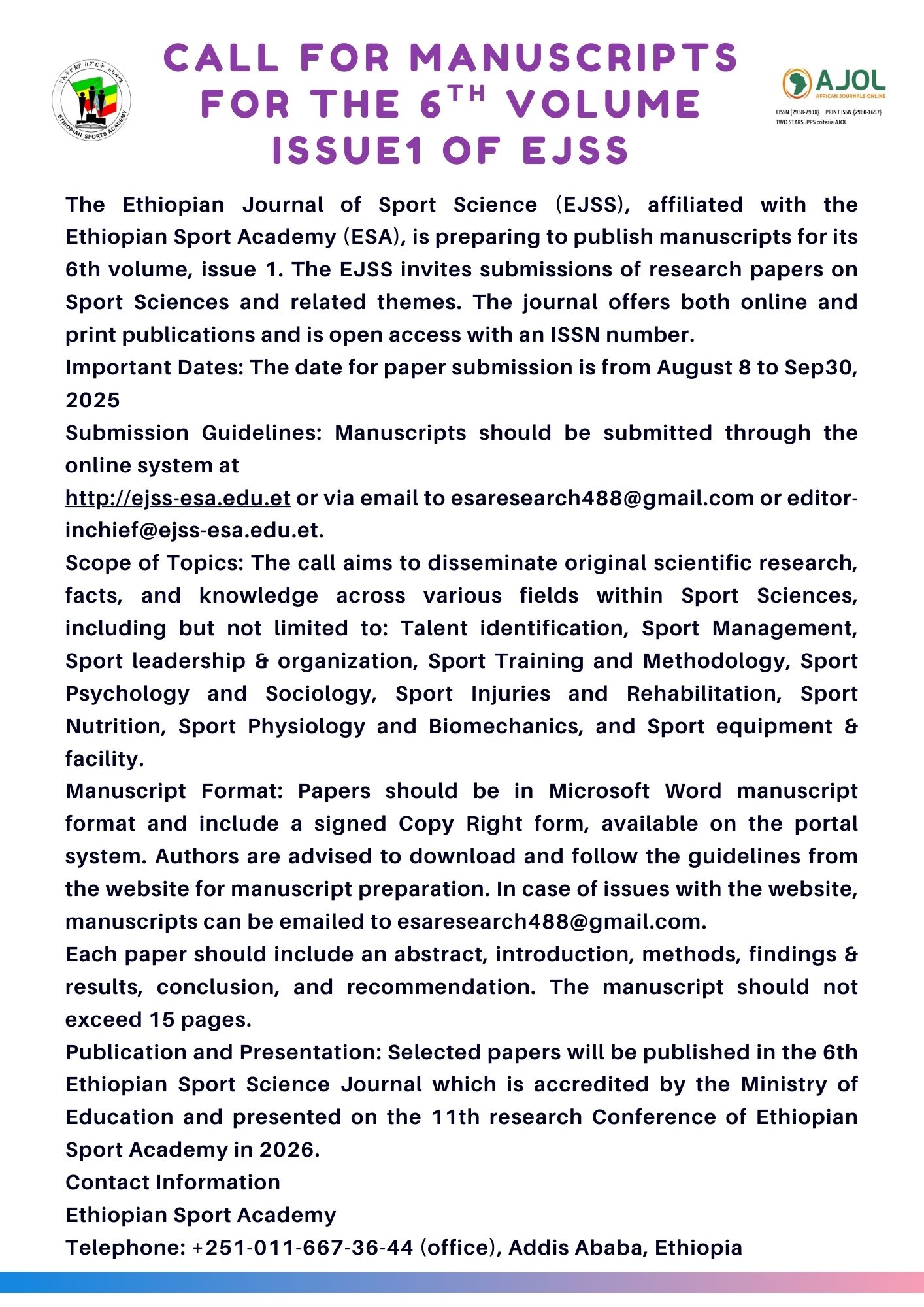Comparative Effects of Plyometric Training and Circuit Training on Physiological and Physical Fitness Variables in U-17 Male Football Trainees
DOI:
https://doi.org/10.5281/zenodo.10813976Keywords:
plyometric training, circuit training, speed, power, agility, resting heart rate, respiratory rate, football traineesAbstract
This quasi-experimental study aimed to investigate and compare the effects of an 8-week plyometric training program and a circuit training program on selected physiological and physical fitness variables in U-17 male football trainees from the Ethiopian Sport Academy. The study involved 22 participants, who were randomly assigned to either the plyometric training group or the circuit training group. Measurements of speed, power, agility, resting heart rate, and respiratory rate were taken before and after the training programs. Statistical analysis was conducted using SPSS ver.20 and paired t-tests, with a significance level of 0.05. The results showed that the plyometric training group significantly improved in power (p=0.00, p<0.05), speed (p=0.00, p<0.05), and agility (p=0.00, p<0.05). The circuit training group significantly improved in speed (p=0.00, p<0.05), resting heart rate (p=0.00, p<0.05), and respiratory rate (p=0.00, p<0.05). Resting heart rate and respiratory rate did not show significant differences in the plyometric training group (p>0.05). Similarly, power and agility did not significantly improve in the circuit training group (p>0.05). Based on these findings, it can be concluded that an 8-week circuit training program has positive effects on speed, resting heart rate, and respiratory rate, while plyometric training has positive effects on speed, power, and agility. Accordingly, it is recommended that a combined session of circuit and plyometric training may lead to significant improvements in physiological and physical fitness variables in male football trainees.





